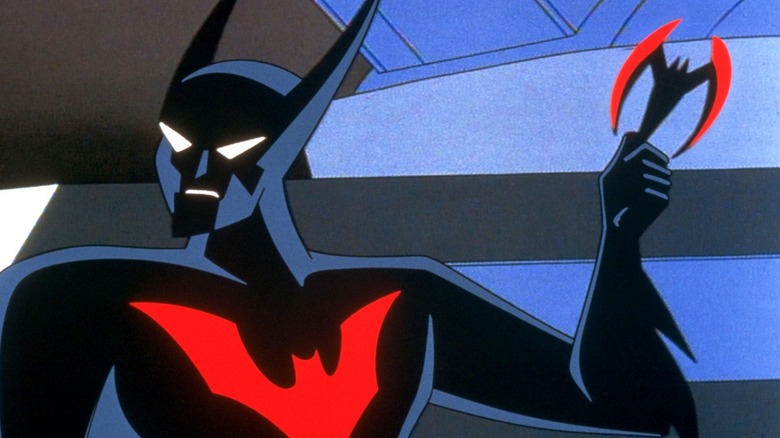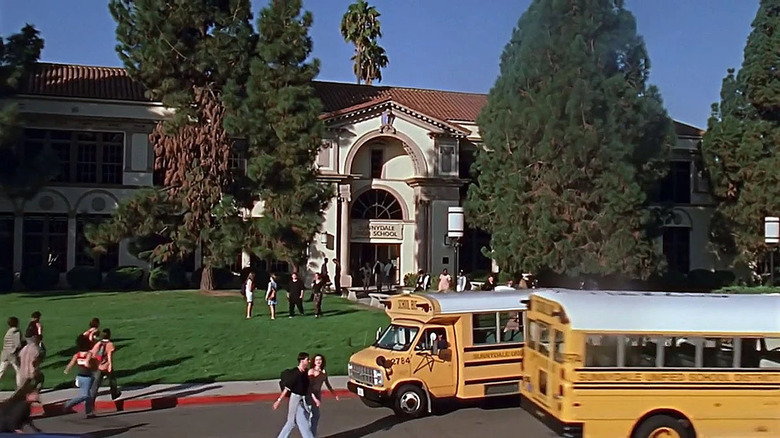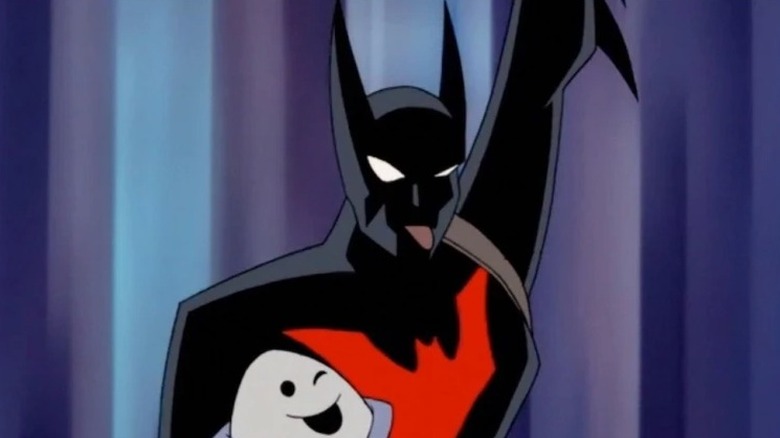Buffy The Vampire Slayer's Success Planted The Seeds For Batman Beyond
"Batman Beyond" is the most out-there project of the DC Animated Universe. It's not based on an existing comic and is instead an original take on Batman's future. Set in 2039, a long-retired, eighty-year-old Bruce Wayne trains the teenage Terry McGinnis to be the new Dark Knight.
An older Batman who'd hung up the cape and cowl wasn't a new idea; that was the whole idea behind Frank Miller's classic "The Dark Knight Returns." However, while Miller depicted Gotham as an urban gangland out of "The Warriors," "Beyond" went with a "tech-noir" setting à la "Blade Runner." This was new territory for Batman and a contrast with the art deco designs of "Batman: The Animated Series."
What to know something funny? This imaginative setting revamp was all incidental: what the WB network really wanted was a teenage Batman show, and setting the series in the future was how the creative team decided to achieve that. What made WB think "teen Batman" was a good idea? The success of "Buffy The Vampire Slayer."
Batman meets Buffy
The genre that "Buffy" was most steeped in was superheroes, not horror. While the Vampire Slayer didn't have a secret identity or costume, she had the powers and the need to balance teenage responsibilities with heroic ones. Buffy herself was especially modeled after Kitty Pryde of the "X-Men," and that influence proved recursive.
"Buffy" was a hit, earning critical respect, a devoted fandom, and a seven-year run between 1997 and 2003. Across this run, ratings always stayed between 4 to 6 million; for a smaller network like WB, a consistent hit like this was a big boon. That's why WB wanted the concurrent Batman cartoon to take notes from the popular "Buffy." Indeed, Terry has a lot more in common with Buffy Summers than his mentor and predecessor.
Speaking to IGN in 2021, "Batman Beyond" producer Glen Murakami acknowledged the influence of "Buffy." However, "futuristic Batman" wasn't the only idea he and Bruce Timm considered. Another discussed option was a series about a young Bruce Wayne, not yet Batman but already helping people. Why did they choose the "Beyond" route? Because it was the most different. Murakami said:
"I felt like people were typecasting us. We did ["Batman: The Animated Series"] and it was like, oh, 'Dark Deco,' film noir. Okay, you guys know how to do that. And then we were doing 'Superman' and it's like, well, even 'Superman' was kind of old-fashioned. I'm like, let's do 'Batman Beyond' to show people we can do something more modern."
So high school
"Batman Beyond" opened storytelling options that "Batman: The Animated Series" didn't have — for good and ill. The series wasn't free of some lesser "high school show" episodes. Take "The Egg Baby," where Terry has to take care of a computerized baby doll for family studies, even when out crimefighting. "The Winning Edge" mixed a story about Bane's venom with "Just say no" after-school special messaging. In "Revenant," Bruce even laments that the case of the week feels "so high school."
However, the series otherwise made interesting use of its setting and premise. For one, Terry was a compelling character. It's easy to dismiss him as just Peter Parker in a batsuit, but he stands apart thanks to both a delinquent past and a great legacy to live up to. The series was able to further Bruce's character too. He'd devoted his whole self to being Batman, so much that one episode suggested that "Batman" is the name he uses when thinking of himself. So, what happens when he's deprived of that identity, and what could cause him to give it up? Some of the most compelling "Batman Beyond" moments come in the form of the answers to those questions.
"Batman Beyond" originated from a simple desire for "teen Batman" and "Buffy" synergy, but it became so much more than that.


